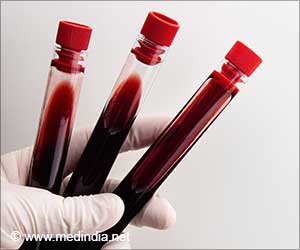New research from the University of Cincinnati has revealed that melanocytes are not the only cells which bring about skin pigment changes.
New research from the University of Cincinnati has revealed that melanocytes are not the only cells which bring about skin pigment changes. It is now seen that some of the most basic cells on the skin's surface influence pigment production and help regulate skin coloration.
The finding offers hope for new approaches to the treatment of pigmentation disorders that leave the skin disfigured by light or dark blotches.In a two-year, preclinical dermatological study, Raymond Boissy, PhD, and his team found that cells known as keratinocytes express certain characteristics that could control skin pigmentation.
Keratinocytes are surface skin cells that make up about 96 percent of the skin’s outer layer (epidermis). The cells give the skin structural integrity and protect the body from infection. Melanocytes, the body’s melanin-producing cells, make up another 2 percent of the epidermis. Melanin is the chemical responsible for skin pigmentation or color.
Boissy says his team’s findings could help scientists develop new drugs that alter the physiological processes that cause pigmentation disorders such as vitiligo—white blotches that occur near the body’s orifices and joints—and melasma, a disorder characterized by dark pigmented lesions.
“We’ve isolated specific physiological properties that regulate the melanocytes’ functional abilities,” explains Boissy, UC professor of dermatology and principal investigator for the study. “This is an important discovery because many pigment diseases are the result of deregulation of the melanocyte.”
“Now we have a new set of molecules to investigate that may help create uniform skin color—both for patients with pigment disorders or serious burn wounds as well as those seeking improved cosmetic skin appearance,” he adds.
Advertisement
Previous research has shown that keratinocytes receive “packages” of pigment granules (melanosomes) from melanocytes. In dark-skinned people, these packages are dispersed throughout the cell individually, creating a larger surface area that absorbs more light than skin cells of light-skinned people, which disperse pigment in clusters.
For this study, Boissy and his team developed a human skin substitute model using a combination of keratinocytes and melanocytes derived from donated light and dark skin. These mixed cells were transplanted into a mouse model and allowed to grow into the skin substitute for about three months.
“We found that by transplanting keratinocytes from light-skinned individuals to bioengineered skin substitutes produced a lightening effect,” says Boissy. “The same effect resulted when keratinocytes from dark-skinned individuals were transplanted into the skin substitute, creating a darkening effect.
“Surprisingly,” he adds, “intermediate skin color was obtained when melanocytes and keratinocytes were combined from light and dark skin together”
In addition, the researchers discovered that the keratinocytes also influenced how much pigment is actually produced. Boissy says the effect is subtle, but it shows that it’s not just genetics of the melanocyte that determines skin coloration.
Source-Eurekalert
LIN/B











